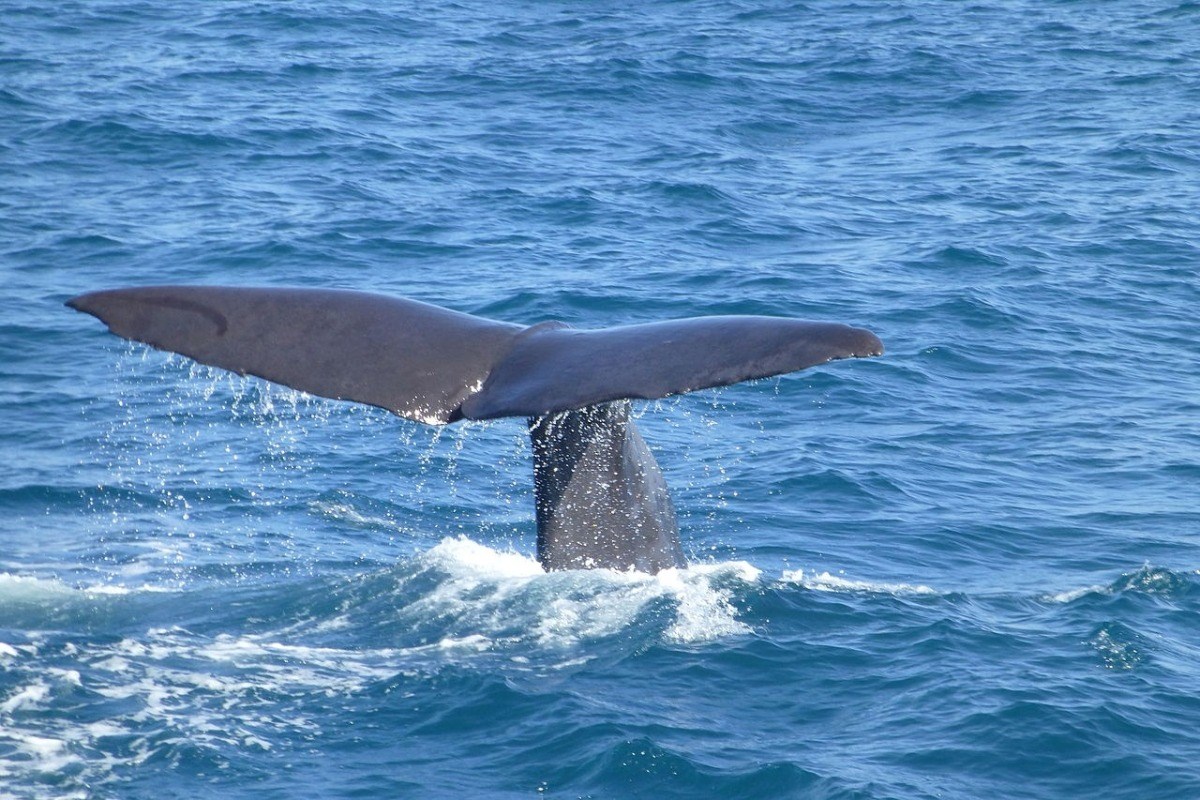
At the height of New Bedford’s participation in the whaling industry, Yankee whalemen hunted four primary species: right whales and sperm whales in all the oceans, gray whales on the west coast of America, and bowheads in the Arctic. Little was known about the size of whale stocks or the migratory patterns of different whale species that was not learned directly through the process of hunting them. Early whaling methods included handheld tools, sail and oar power, and the small-boat approach, so many whales got away. However, Yankee whalemen killed every whale they could, even if it meant killing a calf to take its mother. A four-year voyage was considered successful if it had taken and processed fifty whales. The large number of whaling vessels active in the mid-1800s and the routine attack on well-identified whaling grounds led to dramatically decreased populations. In 1851, hydrographer Matthew Fontaine Maury published a chart of whale population derived from voyage logbooks. By that time, the North Atlantic Ocean was already stripped of sperm and right whales. The discovery of the breeding and calving grounds of grey whales in the shallow bays of Baja California in 1846 led to a hunt that very nearly decimated the species in just a few decades. By 1900 bowhead whales were almost extinct in the Arctic. To make a profit in the 20th century, new technologies were required to chase the faster, more sinkable species. The Norwegians pioneered such a hunt, and new-age whaling became popular in Antarctic waters around 1920. New Bedforders were still involved in the hunt then, but used old technology. New Bedford whaling crews faced competition from steam-powered vessels with harpoon cannons at the bow. These “catcher boats” worked in company with factory ships large enough to drag a blue whale up onto the deck for processing. By 1930 right whales were facing extinction, and their hunt was banned worldwide. The new technology wreaked havoc on species that New Bedforders had never successfully hunted commercially. By 1982, humpback whales in the southern hemisphere were reduced to two percent of their original population; blue whales to five percent, and finbacks to 21 percent. In 1972, the United States Congress passed the Marine Mammal Protection Act, which banned the hunting of marine mammals and the trade in products made from them. The native people of Alaska, who had hunted bowhead whales for generations before New Englanders arrived, were granted an exception to the law, and continue to hunt whales under quotas established to protect the current population. 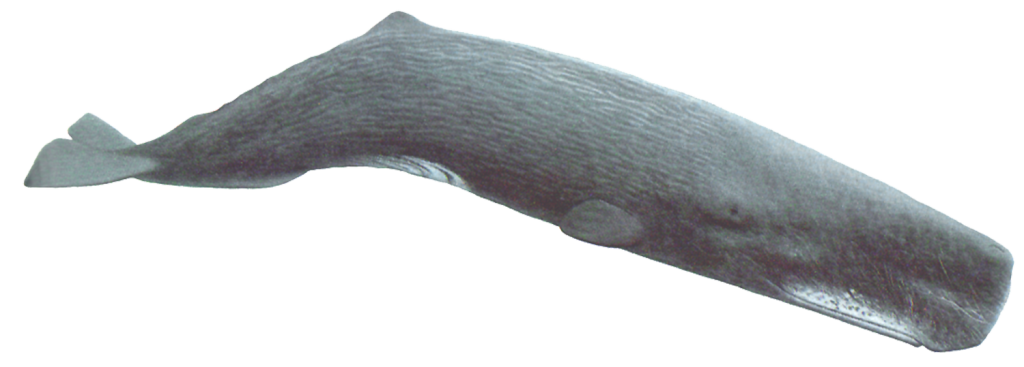
Characteristics: Sperm whales have a single blowhole asymmetrically situated on the left side of the crown of the head. Their heads account for about one-third of total body length, and the skin just behind the head is often wrinkled. Their flukes are triangular. Diet: These toothed whales hunt for food during deep dives that can last for 45 minutes. Their diet consists of larger species such as squid, sharks, skates, and fish. Behavior: Sperm whales inhabit all of the world’s oceans. Their distribution is dependent on their food source and breeding conditions. Sperm whale migrations are not as predictable or well understood as migrations of most baleen whales. Status: Sperm whales are protected under the Endangered Species Act. The best estimate of sperm whales worldwide is 300,000 and 450,000 individuals. Sperm whales were targeted by commercial whalers for the spermaceti oil found in their heads, which was used in oil lamps, candles, and as lubricants. Commercial whaling from 1800 to the 1980s greatly decreased sperm whale population worldwide. Though whaling is no longer a threat, human behaviors continue to hurt the whale population. Entanglement, vessel strikes, and pollution are all threats. 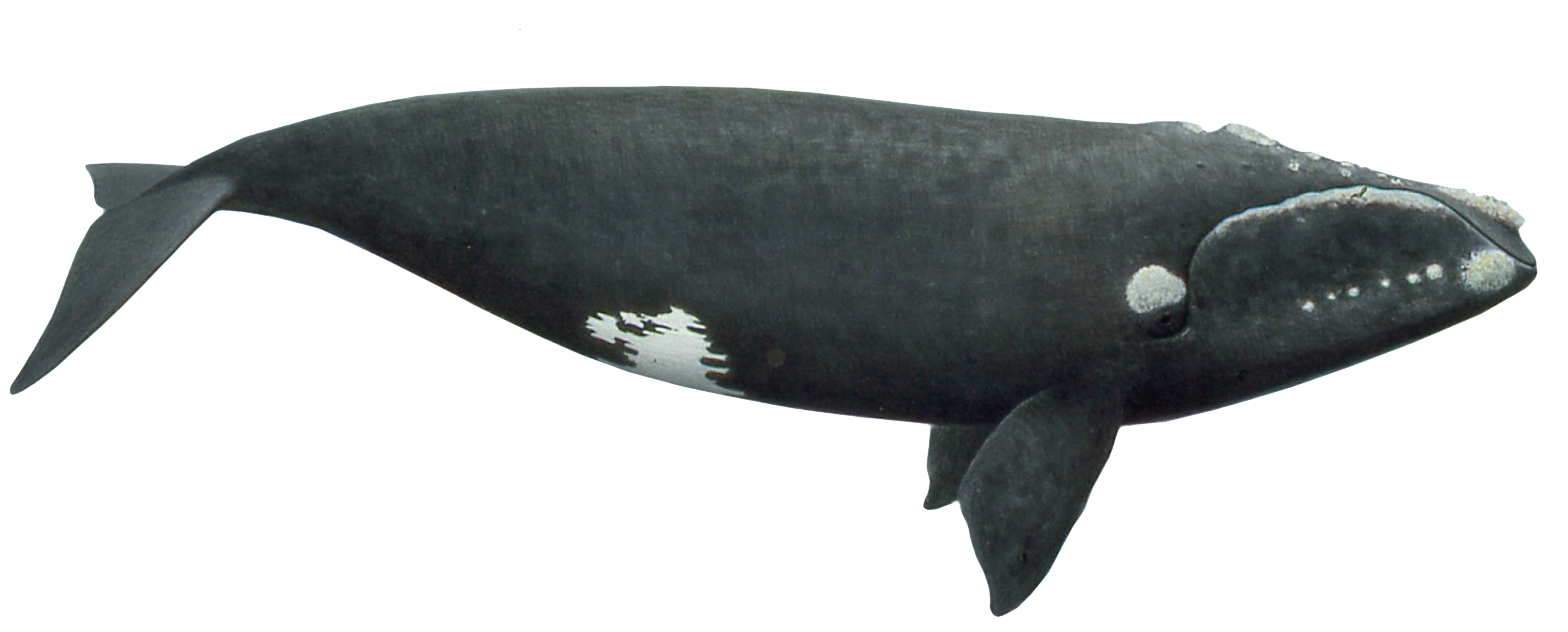
Characteristics: Their tail is broad, deeply notched, and all black with a smooth trailing edge.Their characteristic feature is raised patches of rough, white skin, called callosities. Each right whale has a unique pattern of these callosities. Diet: Feed by swimming open-mouthed through large patches of small zooplankton and small fish. They strain the ocean water through their baleen plates that act like a sieve. Behavior: In the spring, summer, and fall, North Atlantic Right Whales are found in their northern habitats by Canada and New England, where they feed and mate. They'll migrate more than 1,000 miles every fall to the warmer waters of southeastern U.S. Status: These creatures are protected under the Endangered Species Act. As of 2012, there are at least 440 individuals left. By the early 1890s, commercial whalers had hunted Atlantic right whales to the brink of extinction. Today, entanglement in fishing gear and vessel strikes are the leading causes of death. Noise pollution also interferes with the whale lifecycle. 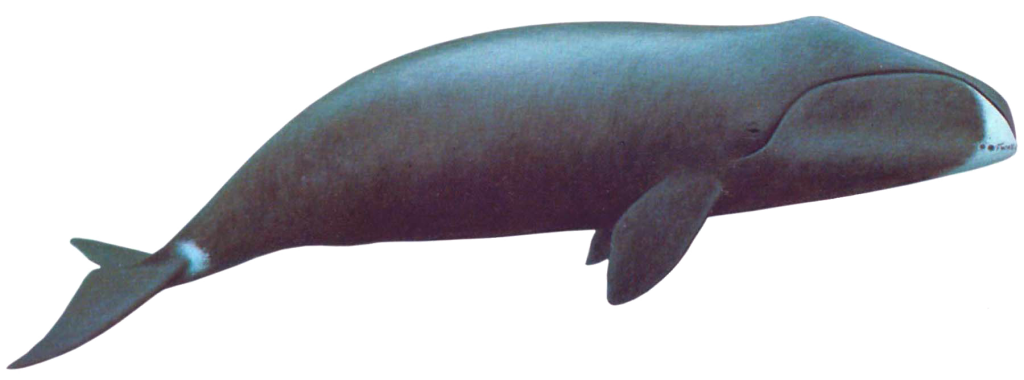
Characteristics: Bowhead whales have a distinctive white chin and no dorsal fin. These arctic dwellers have a large, thick skull that helps them to break through sea ice. An 18-inch layer of blubber — thicker than any other whale — helps to keep them warm. Diet: Baleen plates allow bowheads to filter krill, small zooplankton, and invertebrates out of the ocean water. Bowhead whales have the longest baleen plates of all whales. Behavior: Bowhead whales inhabit the Arctic Ocean. They spend the winter near the southern limit of the pack ice and move north as the sea ice breaks up and recedes during spring. Status: Bowheads are protected under the Endangered Species Act. As of 2011, there are about 16,000 Western Arctic Bowheads. The economic value of the bowheads’ oil and baleen, combined with their slow swimming speeds and tendency to float when killed, made them a prime target for whalers from the mid-1700s to early-1900s. Prior to commercial whaling, the global bowhead whale population is estimated to be 50,000; by the 1920s, the population had dropped to less than 3,000 whales. While numbers have risen, bowhead whales are threatened by warming ocean water, pollution, vessel strikes, and ocean noise. 
Characteristics: Gray whales lack a dorsal fin, but instead have a dorsal hump and small bumps called “knuckles” between the dorsal hump and tail fluke. The tail flukes are nearly 10 feet wide with S-shaped trailing edges and a deep median notch. Diet: These baleen whales are primarily bottom feeders that consume invertebrates. Gray whales suck sediment and food from the sea floor by rolling on their sides and swimming slowly along, filtering their food through coarse baleen plates on each side of their upper jaw. In doing so, they often leave long trails of mud behind them. Behavior: Gray whales are found mainly in shallow coastal waters in the North Pacific Ocean. Most of these whales spend the summer feeding in the north, and head south toward calving grounds for the winter. The gray whale makes one of the longest annual migrations of any mammal — 10,000 miles roundtrip. Status: There are two populations of gray whales: an eastern stock that lives along North America's western coast, and a western stock that lives along Asia's eastern coast. The eastern population was once protected by the Endangered Species Act, but whale numbers have rebounded. However, the western North Pacific stock is estimated to include fewer than 200 individuals. Gray whales earned the nickname “devil fish” because of their aggressive reactions when harpooned. Commercial whaling rapidly brought both Pacific populations to near extinction. Today, threats include vessel strikes (especially because of their curious nature), pollution, and ocean noise. 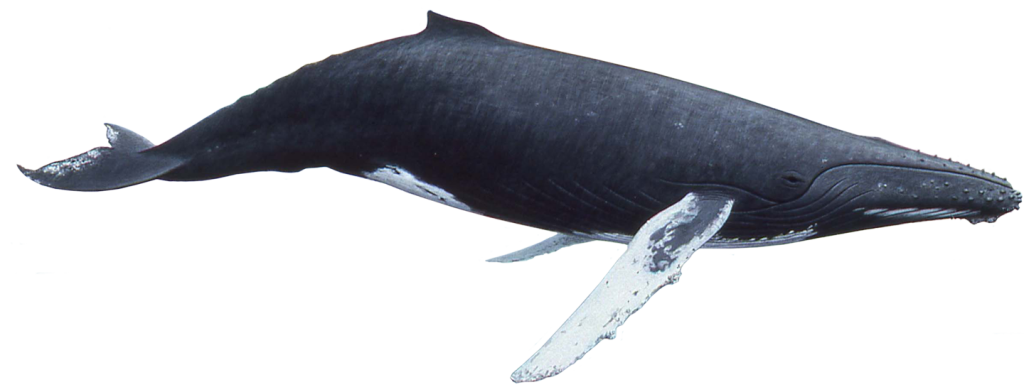
Characteristics: Humpback whale flukes can be up to 18 feet wide. They are serrated along the trailing edge, and pointed at the tips. Tail fluke patterns, in combination with varying shapes and sizes of whales’ dorsal fin and prominent scars, are unique to each animal. The humpback whale takes its common name from the distinctive hump on its back. Its long pectoral fins inspired its scientific name, Megaptera, which means “big-winged.” Diet: These baleen whales filter-feed on small crustaceans (mostly krill) and small fish. Humpback whales use bubbles, sounds, the seafloor, and pectoral fins to help them herd, corral, and disorient prey. Behavior: Humpback whales are generally found close to shore, and are commonly seen jumping out of the water or slapping the surface with their pectoral fins and tails. During the summer months, humpback whales spend most of their time feeding and building up fat stores to sustain them throughout the winter. In the winter, they'll migrate up to 5,000 miles to tropical mating and calving grounds. Status: All populations of humpbacks were originally protected with the Endangered Species Act. Today, only four of the 14 populations are still endangered, and one population is considered threatened. Before commercial whaling was halted in 1985, all populations of humpback whales were greatly reduced, some by more than 95 percent. Species numbers have increased in much of its range, but humpbacks still face threats from entanglement, vessel strikes, noise pollution, and habitat impacts.
*Information sourced from the National Oceanic and Atmospheric Administration and National Park Service.
|
Last updated: August 16, 2018
